From 1886 to 1917, Harrison Gray Otis was the owner and publisher of the Los Angeles Times. During that time the newspaper pursued a strong conservative viewpoint, and was militantly anti-union in its editorials and in its relationship with employees.
On October 1, 1910, in the middle of a strike called to unionize the metal trades of the city, the Times building was dynamited. The south wall facing Broadway Street collapsed, causing the second floor to also collapse under the weight of its machines. The first floor then collapsed into the basement, destroying the heating plant and gas mains. The building, with many of its workers trapped inside, was soon an inferno. There was a loss of life of at least 20, and about the same number were injured, some of them permanently.
In an unusual move the mayor hired a private investigator who was able to implicate a number of men in the bombing. These included Ortie McManigal, James B. McNamara, and his brother John J. McNamara (secretary-treasurer of the International Union of Bridge and Structural Iron Workers). McManigal agreed to testify against the McNamara brothers. Organized labor, in turn, saw this as an all-out attack on the unions and labor in general. Samuel Gompers, president of the American Federation of Labor, hired Clarence Darrow to defend the brothers. Darrow called them “pawns in a vast industrial war.” By the time the trial began, however, Darrow had come to the conclusion that the brothers were guilty. Rather than fighting a hopeless battle, he persuaded the brothers to plead guilty. That decision stunned the city and inferiorated Gompers.
James McNamara got a life sentence, while his brother received a sentence of 15 years. Two others, David Caplan and Matt A. Schmidt, were later implicated and received life sentences. The damage from the trial was to plague Clarence Darrow for the rest of his life.
This article appeared in the USC Information Services Division.
The Explosion and Response
At 1:07 in the morning on October 1,1910, the day new Fire Station 23 was to go into service, the most violent explosion to ever take place in the city of Los Angeles occurred at First and Broadway at the Los Angeles Times building. A bomb had been placed in the alley behind the building which was occupied by 100 employees. The explosion and resulting fire killed 20 workers and injured many more. A police officer walking his beat was knocked down by the blast. He got up and ran to Box 12 at First and Broadway and pulled the hook. The firemen at Station 3 were jolted awake by the explosion and some were knocked from their beds. It was a short run for Station 3’s chemical, hose, engine, and aerial ladder rigs. Never in their careers – or the history of the LAFD – had so large a building been so totally involved. When 3’s arrived, workers were at the windows trying to escape the flames and smoke. Some jumped before a life net was deployed and many who jumped were saved by the truck company members. A second and third alarm was sounded which brought a total of 8 engines, 2 trucks, a combination chemical and hose wagon and the Gorter Water Tower (the same one that is in our Hollywood Museum). The firemen concentrated on protecting the exposed buildings and on controlling the fire in the Times building.
Fireman William Campbell of Engine 17 was operating a stream inside the first floor window of the Times when the second floor collapsed. Campbell was buried up to his neck in a deluge of steel, brick and stone. His fellow firemen thought he had been killed until they heard him calling for help. While firemen covered Campbell with protective streams of water, a rescue team crawled over the rubble and for two hours worked to clear the debris until Campbell’s chest was free. The problem was an iron beam that had fallen across his foot and could not be moved. Firemen tried to cut the beam and pry the beam up but that did not work. “I guess my foot goes, boys”, Campbell told his rescuers. The firemen refused to give up as more rocks and beams threatened to fall on them. Campbell pleaded with them to cut off his foot. After being trapped for three and one half hours, a receiving hospital doctor amputated his foot at the ankle and he was at last freed. Campbell miraculously survived but he never answered another alarm. He was pensioned due to his injury.
The Aftermath
The bomb consisting of 16 sticks of dynamite and a clock timer was placed in the alley by a criminal element of a labor union. The bomb was supposed to go off at 4:00 a.m. when the building would have been empty, but the clock timing mechanism was faulty. The 16 sticks of dynamite in the suitcase bomb were not enough to destroy the whole building, but the bombers were not aware of the presence of natural gas main lines under the building. The bombers were also unaware that a number of Times employees were working overnight to produce an extra edition the next afternoon which would carry the results of the Vanderbilt Cup auto race. The bomb collapsed the side of the building, and the ensuing fire destroyed the Times building and a second structure next door that housed the paper’s printing press. Of the 115 people still in the building, 21 died (most of them burned alive in the fire).[ The next morning, unexploded bombs were discovered at the homes of Otis and of F.J. Zeehandelaar, secretary of the M&M; the Hotel Alexandria; and the Los Angeles County Hall of Records (then under construction by the non-union Llewellyn Iron Works). Despite the destruction to the Times building, they never missed an edition and rebuilt and remained on the same site until they moved to their present location at First and Spring Streets on July 1, 1935.
Submitted by Frank Borden



